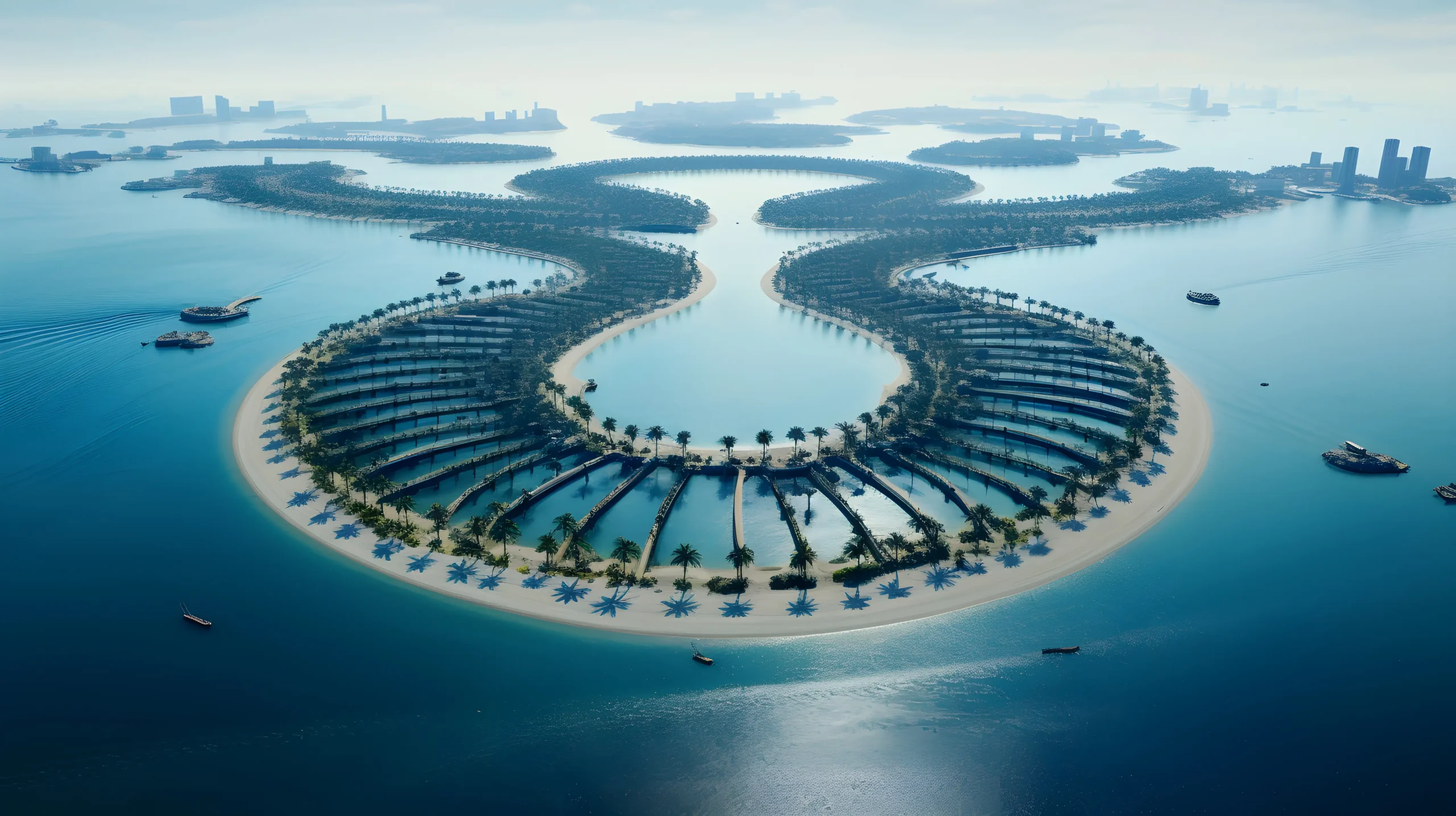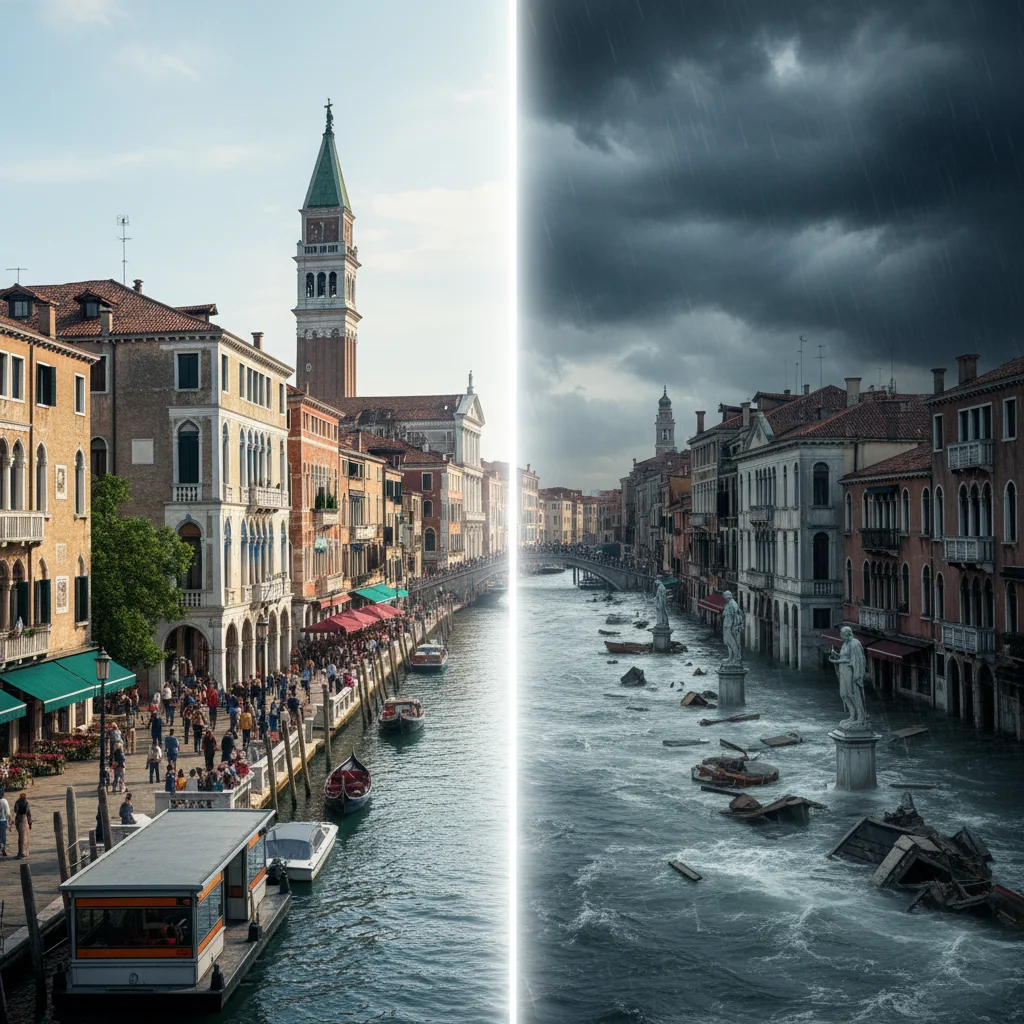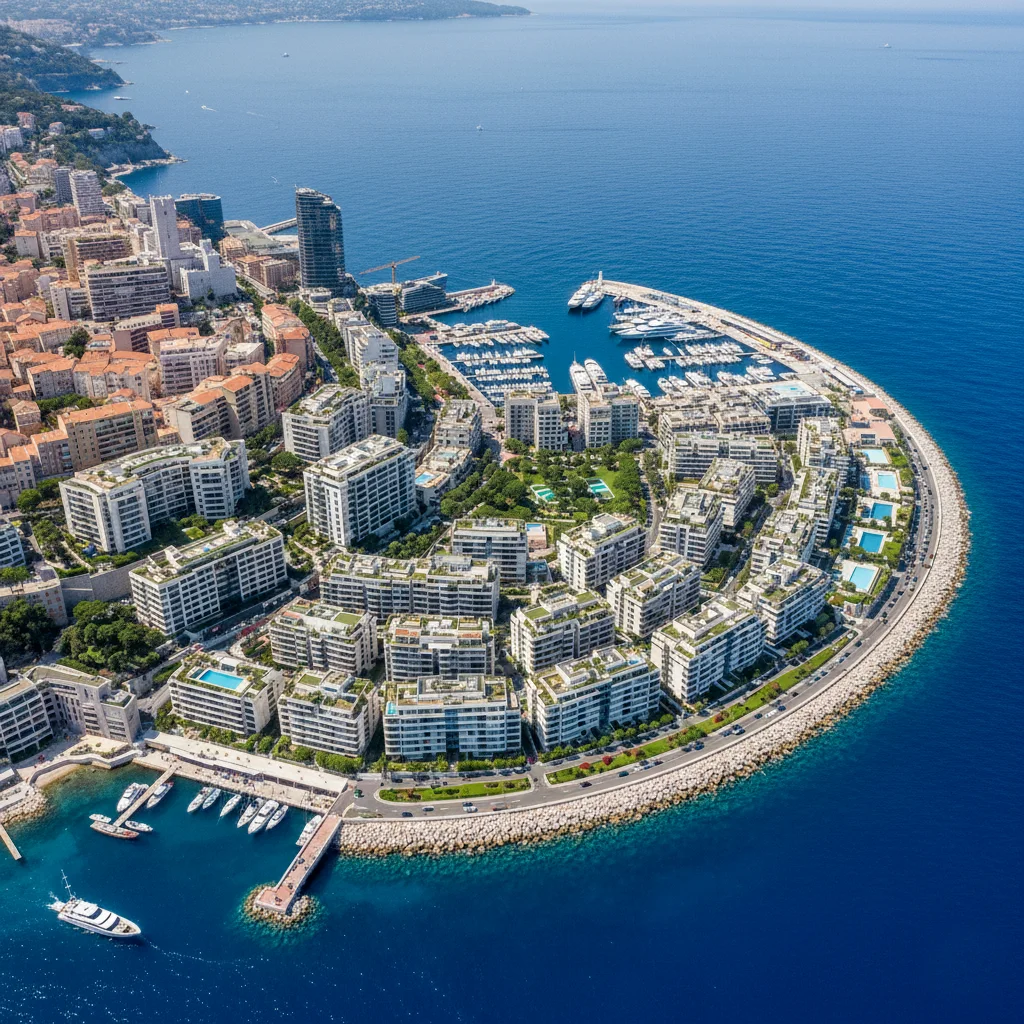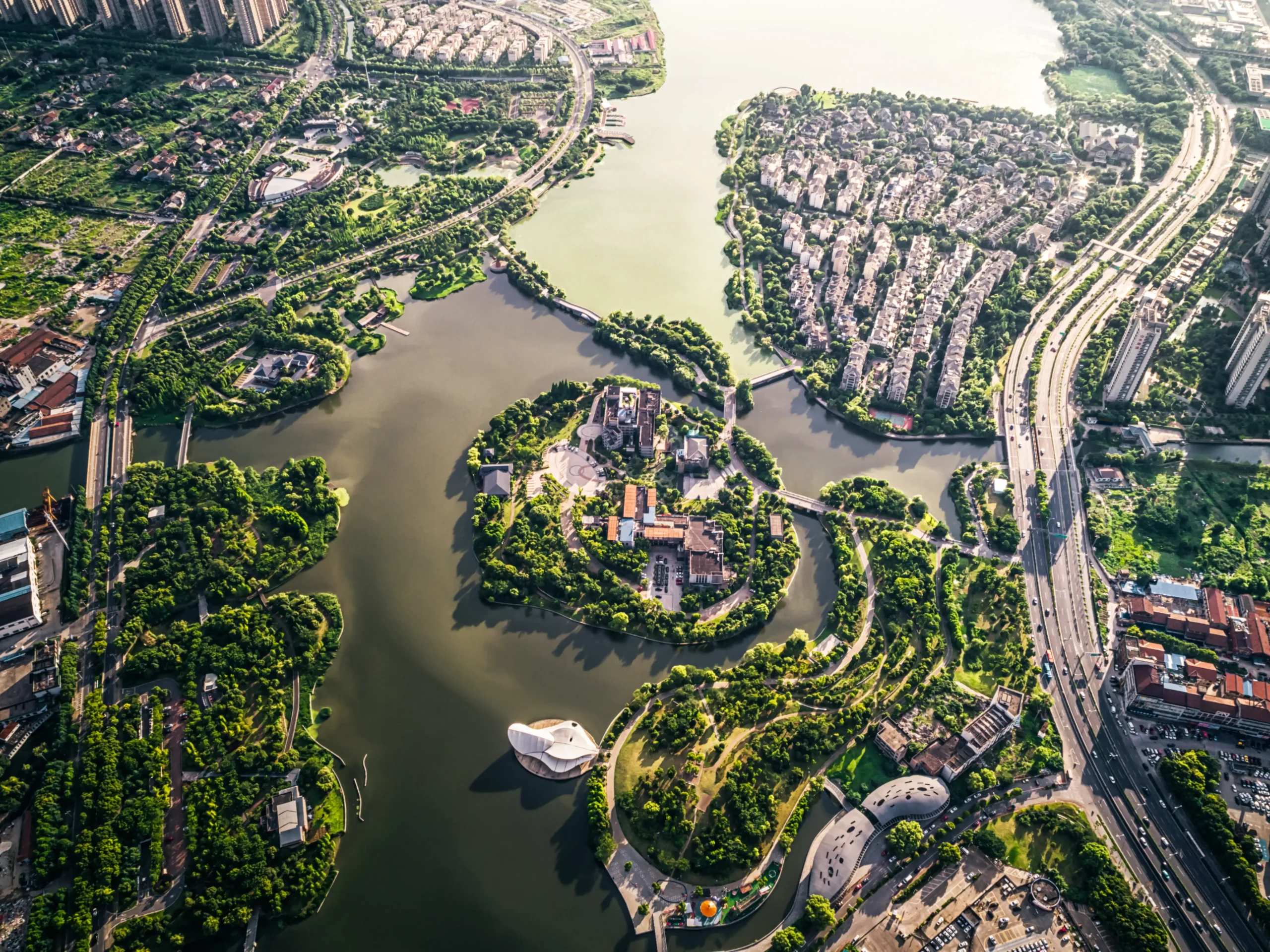The Economics & Feasibility of Floating Cities
A Business Model for Climate Resilience
By Peter Davis

A Vision for a Fluid Future
The concept of a city floating upon the sea once belonged solely to the realm of imagination, an idea preserved in the pages of science fiction novels and utopian literature. Today, however, what was once dismissed as fantasy has begun to emerge as a serious and innovative response to two of the greatest challenges confronting humanity: the explosive growth of urban populations in coastal regions and the looming threat of rising sea levels caused by climate change.
For centuries, human civilization approached the ocean as a barrier to be tamed, subdued, or conquered. Land reclamation, seawalls, and embankments all represent this struggle to dominate nature rather than coexist with it. Yet as the realities of climate change become more urgent, a new paradigm is taking shape. Increasingly, architects, engineers, governments, and investors are reimagining the ocean not as an obstacle but as a frontier for urban development. Floating cities, once the stuff of speculation, are now being studied as plausible and even necessary extensions of human settlement.
These cities are not a single uniform model but rather a spectrum of visions, ranging from modest humanitarian housing projects to ambitious luxury enclaves. On one end, they are imagined as safe havens for climate refugees and vulnerable populations, offering adaptive housing in the face of rising tides. On the other hand, they take the form of ultra-exclusive developments that promise investors and residents the allure of prestige, innovation, and sustainability. What unites them is the recognition that technological advances in marine engineering and sustainable design have made them technically possible.
The barriers that remain are less about physics or architecture and more about economics, governance, and social acceptance. The path forward lies not in a single sweeping global project but in context-specific applications, supported by collaborations between public institutions and private investors, particularly in coastal regions already confronting the risks of environmental instability. Widespread adoption may take decades, but carefully targeted developments could become crucial tools for adapting to climate pressures and reshaping the urban future.
The urgency of exploring floating cities stems from the confluence of demographic and environmental pressures that are impossible to ignore. Coastal zones, while making up only a fifth of the Earth’s total land area, are home to more than 40 percent of the world’s population.
These areas are not only densely populated but also host vital infrastructure, from ports to power plants, that keeps the global economy functioning. With projections indicating that global sea levels could rise anywhere between 0.3 and 2.5 meters by the middle of the century, the stakes are monumental.
Studies suggest that over 600 million people could face displacement if these trends continue unchecked. Coastal megacities such as Jakarta, New York, and Shanghai already contend with chronic flooding, land subsidence, and saltwater intrusion, while small island nations like the Maldives face the existential threat of being submerged entirely. Their governments have warned repeatedly that unless drastic action is taken, they may see their territories rendered uninhabitable within a century.
At the same time, cities across the world are grappling with unprecedented land scarcity. By 2050, two-thirds of humanity is expected to live in urban areas, placing immense pressure on available space and driving up the cost of land. Floating cities offer a rare solution that addresses both challenges simultaneously.


They create new territory where none exists while providing resilience against rising seas. This dual purpose not only makes them compelling from a humanitarian standpoint but also economically attractive. Developers can position floating communities as both practical refuges and visionary real estate ventures. Luxury projects such as Monaco’s Portier Cove illustrate this duality: while not designed with climate resilience in mind, they showcase how floating platforms can unlock new space in crowded coastal cities and command extraordinary value on the property market.
In this way, the concept appeals both to urgent humanitarian needs and to the forces of economic growth. Historically, our attempts to expand into the sea relied on land reclamation, a process of filling shallow waters with soil or concrete to create artificial land. Though widespread, this practice is environmentally destructive. It disrupts marine habitats, alters sediment flows, and leaves reclaimed land vulnerable to earthquakes and erosion.
Floating architecture takes a fundamentally different approach. Instead of resisting the sea, it adapts to it. As Dutch architect Koen Olthuis, a pioneer in water-based design, has noted, floating architecture is inspired by the philosophy of coexistence, allowing structures to rise and fall naturally with tides and storms. This adaptability offers a resilience that traditional land reclamation cannot provide.

The design ethos of floating cities goes beyond simple adaptation. Increasingly, projects are being envisioned as regenerative, capable not only of surviving in marine environments but also of enhancing them. The Maldives Floating City, for example, is modeled on coral reef formations and integrates artificial reefs into its design, helping to support marine life. Oceanix City, a United Nations, backed initiative in Busan, South Korea, incorporates Biorock, an innovative material that regenerates coral reefs while simultaneously reinforcing structures against extreme weather. Such designs allow floating cities to market themselves not merely as neutral alternatives to destructive land reclamation, but as proactive tools for ecological restoration. This ecological framing aligns them with global sustainability goals and enhances their appeal to investors, governments, and residents alike.
Across the world, a diverse portfolio of floating projects is emerging, each with its own ambitions and financial models. The Maldives Floating City stands out as a climate-resilient neighborhood designed to safeguard the future of a nation under existential threat. Oceanix City in Busan has captured global imagination as a prototype for scalable floating communities, blending architectural innovation with public-private collaboration. Meanwhile, organizations like the Seasteading Institute take a different tack, viewing floating settlements as laboratories for new governance systems and social models. Backed by figures such as PayPal co-founder Peter Thiel, Seasteading proposes communities beyond national jurisdictions where new political and economic structures can be tested. This vision, while provocative, faces significant legal and diplomatic hurdles since international maritime law was never designed for permanent offshore cities. Other projects, such as Monaco’s Portier Cove, approach the idea from a luxury development perspective, with real estate priced at extraordinary levels and designed to cater to the wealthiest elites. At the opposite end of the spectrum, humanitarian organizations in Bangladesh have deployed floating schools and hospitals to serve climate refugees, demonstrating how low-cost solutions can provide critical services in flood-prone areas. Together, these examples illustrate the flexibility of the floating city model and the wide range of contexts in which it can be applied.
The economics of floating cities present a paradox. On one hand, the cost of building them is prohibitively high for the very populations most at risk from sea-level rise. On the other, luxury developments promise extraordinary returns. Small pilot projects can be budgeted at tens of millions of dollars, while larger ventures like Oceanix City are estimated in the hundreds of millions, and luxury projects in Monaco cost billions. These sums make it nearly impossible for vulnerable communities in developing nations to afford them without substantial subsidies. Studies in Indonesia show that residents often reject floating housing, not because of cultural concerns, but because their incomes are insufficient to cover the costs. Without significant intervention from governments or international organizations, floating cities risk becoming exclusive enclaves for the wealthy rather than lifelines for those in need.
Financing models for these ventures are still evolving. Public-private partnerships appear to be the most promising, with governments able to de-risk projects by providing regulatory frameworks, subsidies, and long-term planning support. Private investors, meanwhile, supply the necessary capital and innovation. Monaco’s Portier Cove, partially funded by its government, exemplifies this model, as does the collaboration between Oceanix and UN-Habitat. Alternative funding strategies, including crowdfunding and private philanthropy, have also been employed for smaller ventures. Yet the lack of legal clarity remains a significant deterrent for investors, since issues of property rights, zoning, and governance are unresolved. For floating cities to become an investable asset class, legal frameworks must evolve in step with technological advances.
From an engineering perspective, the feasibility of floating cities has advanced rapidly. Innovations in buoyancy systems, modular construction, and corrosion-resistant materials allow platforms to withstand waves, winds, and storms. Designs often employ prefabricated hexagonal modules, assembled in shipyards and towed to location, which reduce costs and environmental disruption. Materials such as reinforced concrete and Biorock extend longevity while fostering ecological regeneration. Self-sufficiency is another cornerstone of design. Net-zero energy goals rely on solar, wind, and wave power, while closed-loop water and waste systems ensure minimal environmental impact. Food can be produced on-site using aquaponics and hydroponics, reinforcing the independence of these communities. Yet despite these technological strides, engineering remains only one piece of the puzzle. Legal and cultural challenges pose equal, if not greater, obstacles.
Maritime law, governed by the United Nations Convention on the Law of the Sea, was never written with permanent floating cities in mind. Most ocean areas fall into either national exclusive economic zones or international waters, leaving questions of sovereignty, taxation, and governance unresolved. For developers and investors, this uncertainty creates insurmountable risks. Even where legal frameworks exist, public acceptance remains an issue. Communities must feel that floating cities respect their traditions and deliver tangible benefits rather than impose alien structures or exacerbate inequality. The danger is that floating cities could deepen divisions, offering safety and comfort to the wealthy while vulnerable populations are left behind.
Environmental concerns add another layer of complexity. Advocates argue that floating cities can minimize land use, preserve terrestrial ecosystems, and even foster marine biodiversity. Artificial reefs, shading, and water cooling are among the benefits touted. Yet large-scale marine construction inevitably alters ecosystems in unpredictable ways. The full long-term impact of permanent floating settlements on ocean chemistry, marine life, and water quality remains unknown. For this reason, comprehensive environmental impact assessments are indispensable. Floating cities cannot simply be marketed as “green” without rigorous scientific evaluation of their true ecological consequences.
The future of floating cities will not arrive in one sweeping wave but rather through incremental, targeted developments. Early projects are likely to succeed in shallow, protected waters where engineering challenges are more manageable. These pilot ventures, if backed by governments and supported by communities, can serve as proof of concept. Over time, larger and more ambitious projects may emerge, potentially leading to autonomous communities in international waters. But the path to that future requires careful planning, inclusive design, and the balancing of humanitarian needs with commercial interests.
Ultimately, floating cities represent both a profound opportunity and a formidable challenge. They hold the promise of resilience, innovation, and ecological regeneration, but they also raise thorny questions of economics, governance, and equity. To succeed, they must be designed for the benefit of all, not just a privileged minority. This requires robust public-private partnerships, progressive legal frameworks, and community-centered planning. By advancing in measured, strategic steps, floating cities can transition from the realm of utopian imagination into a practical tool for humanity’s survival and growth in an era of rising seas.
